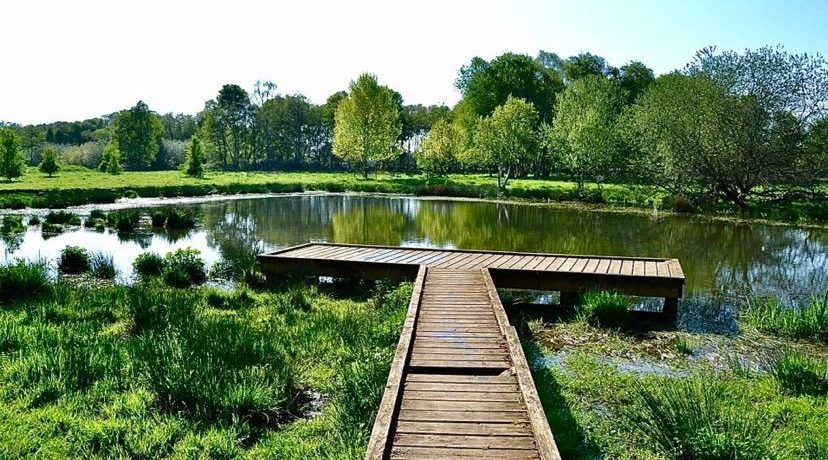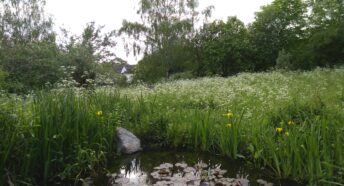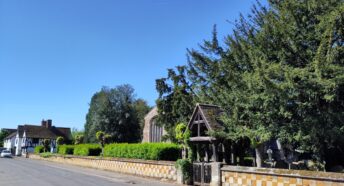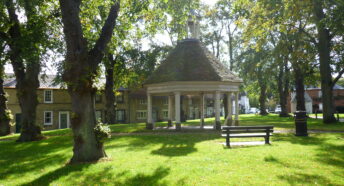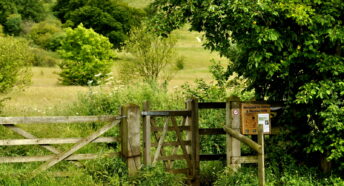H is for… health
Our series of posts helping you to explore our county is an A-Z of Bedfordshire places, landscapes and history. Each post includes tips for walks and places to visit.
In this feature we explore some of the places in Bedfordshire associated with health and healing. From medieval wells to Victorian innovations, we tell some historical stories, before turning to a more modern development that uses Bedfordshire’s countryside and urban green spaces – green social prescribing.
Stevington’s Holy Well
Close to Stevington Church is a Holy Well. Natural spring water emerges from the spot where a limestone outcrop meets the clay. The well may have become known as holy because the spring flows from under the church, or the church may have been built on the site because of the well. Either way, the water developed a reputation for healing properties, especially for eye complaints. In the mid 1200s a Hospitium or guest house was built in the village so that pilgrims had somewhere to stay if they had travelled long distances, were seriously ill or had conditions that required longer term care. The Hospitium was run by nuns from nearby Harrold Priory. Records suggests that there was a garden, a dovecote and a small vineyard – although these fell into disrepair when the community was hit by plague in the 1340s.
At the time of the Reformation, the reputed powers of sites like Stevington’s Holy Well were dismissed as superstation and use of the Hospitium was ended. The pure, mineral rich water almost certainly did help some patients, but perhaps more importantly, it also provided a source of hope and comfort at a time when healthcare was rudimentary.
Pine woods at Aspley Guise
In 1856 Dr James Williams wrote a book which put Aspley Guise on the map. He compared the climate and rainfall of Aspley Guise with a selection of resorts in Britain and on the continent and concluded that it was one of the healthiest places in the country. This rested on the area having a consistent temperature throughout the year, with one of the smallest fluctuations between summer heat and winter cold, the altitude, and the presence of pine woods. Tuberculosis (or consumption) was a common disease, and Dr Williams suggested that the climate would suit those looking for somewhere to convalesce or to stop its advance.
The period 1860-1890 saw the development of sanatoriums, hotels, eating places and souvenir shops which served both patients and the tourists who were drawn to the area to take the air. Walking in the pine woods became popular and Aspley Guise came to have the reputation of being a spa resort.
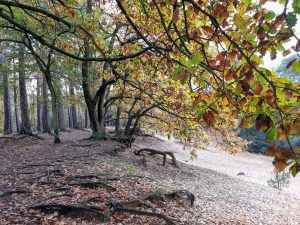
Iron Rich Flitwick Water
In around 1859, Henry King Stevens took over the tenancy of a house and nearly twenty-two acres of land known as ‘The Folly’, on the outskirts of Flitwick. He became convinced that the springs that flowed through his land possessed healing powers. He began to sell the water locally at 2d a bottle and was keen for the medical profession to acknowledge its potential. The water became increasingly popular with people travelling long distances to soak cloths in the springs.
In 1885, ‘Flitwick Water’ secured the highest award at the National Health Society Exhibition but Mr Stevens still had to convince doctors that he had discovered a valuable medicine. He continued to submit samples until, in 1891, an article in the ‘Lancet’ journal brought success. In the article the water was described as a clear sherry colour, with a very high iron content, and having a temperature of 45 degrees at all times of the year.
A London depot was established, and advertisements were placed in magazines and the national press, but Mr Stevens died in 1898 before he could realise the full extent of his ambitions. The estate was sold to R.W. White & Company, a soft drinks manufacturer based in London.
The ‘Flitwick Chalybeate Company’ was formed and the fame of ‘Flitwick Water’ spread. However, as large manufacturing chemists began to develop more efficient substitutes, the appeal of ‘Flitwick Water’ gradually lessened and by the 1930s very little was being produced.
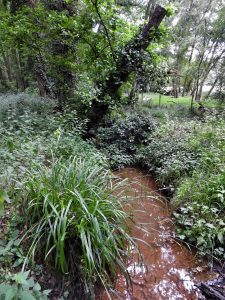
The Panacea Society
Shortly after the end of the First World War, the Panacea Society was founded in Bedford. Mabel Bartrop, the widow of a clergyman, became their leader. During the 1920s the community discovered what it believed was a panacea, or cure for all illnesses. The cure involved prayer and ordinary drinking water; the water was infused with a healing spirit from Octavia’s (as Mabel Bartrop was known to the Society’s members) breath. The water could be drunk or applied externally to the body.
At first only those living in the community in Bedford could take the water, but later squares of cloth were posted out to recipients around the world. The cloth had been breathed on by Octivia and instructions were provided about how to place the squares in water and use them to bring about a cure. The Panacea Museum has a fascinating collection of letters from recipients which detail their ailments and the results of using the squares. The Society continued to distribute its healing cure until the last member died in 2012. In total, over 130,000 people applied to receive the Society’s method of healing through water.

Green social prescribing
Today, green social prescribing links patients to a range of programmes based around nature, growing projects and walk for health initiatives. Green prescriptions can be given by health and social care professionals including GPs, physiotherapists and community mental health practitioners. They can be used to tackle a range of conditions, both physical and mental. A variety of programmes take place across Bedfordshire, many managed by Beds RCC (Bedfordshire Rural Communities Charity). These include gardening, conservation work, walking groups and nature-based activities.
Visit the places mentioned in this feature
Iron Rich Flitwick Water – BCN Nature Reserve / Two Moors Heritage Trail (five mile walk)
